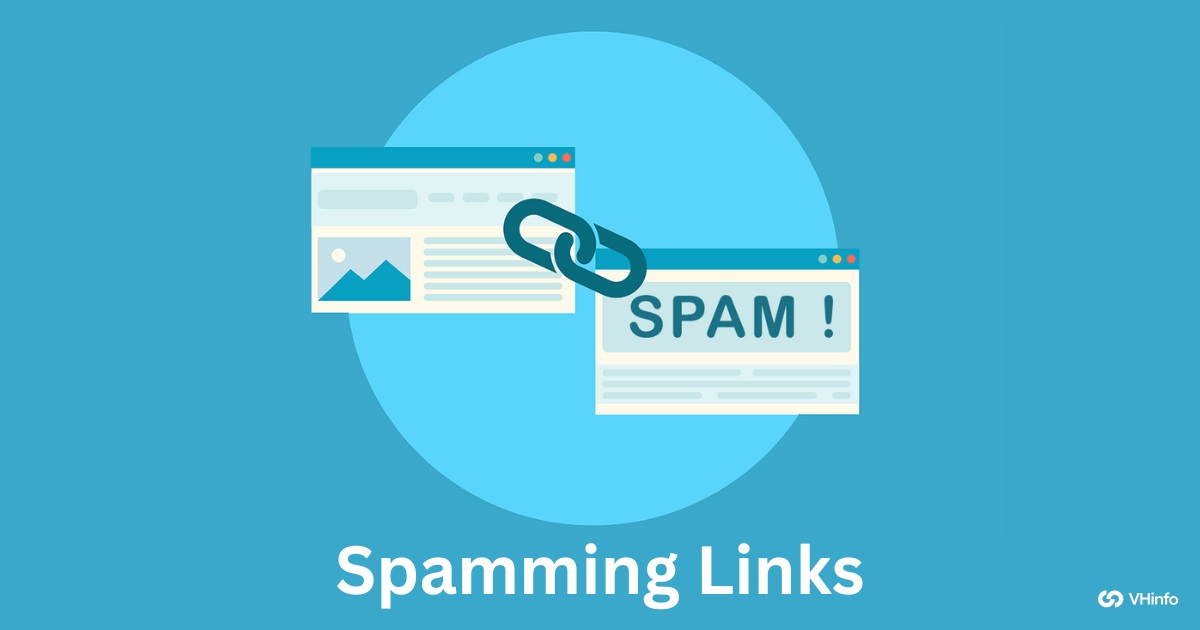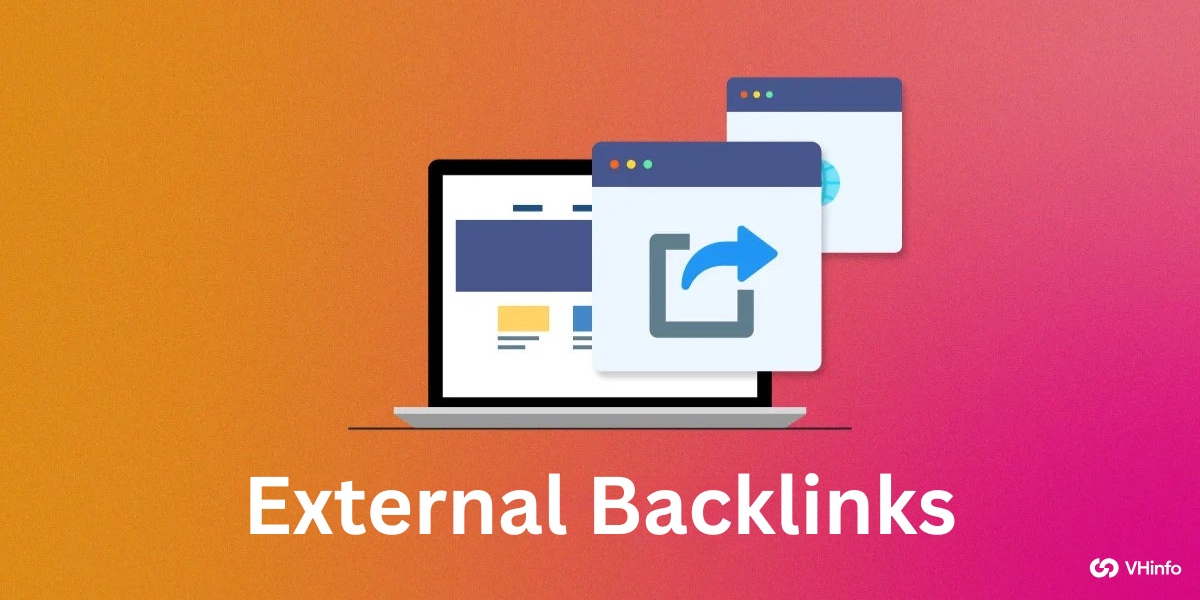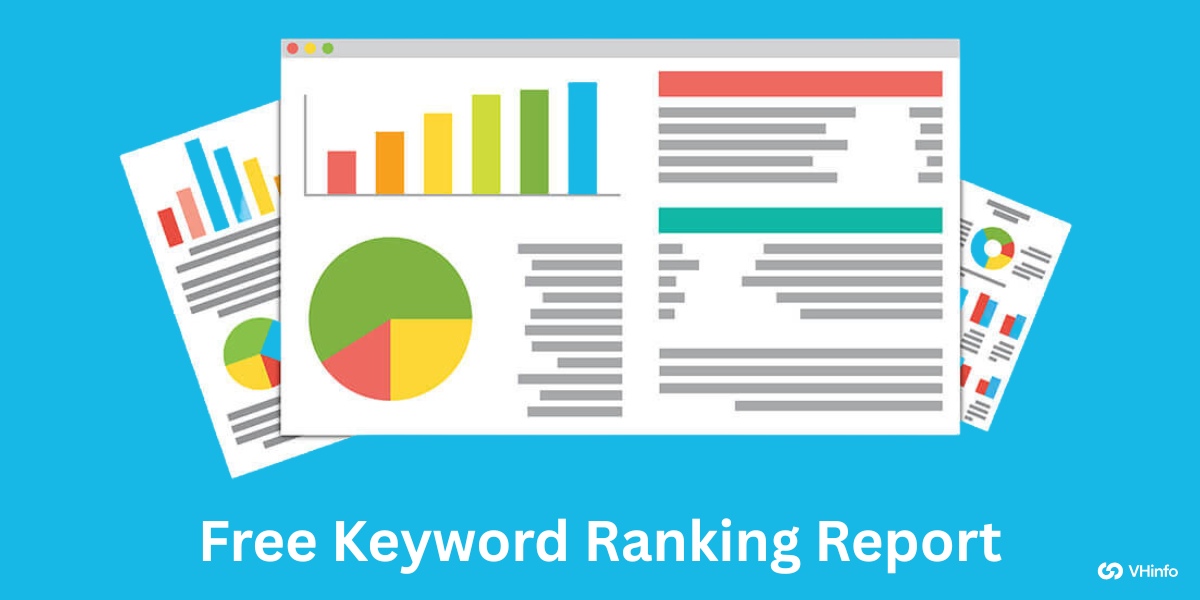Getting links from other websites to your own is a key part of helping people find you through a Google search. This process, known as link building, tells a search engine that your site is trustworthy and important. However, not all links are good for you.
Some website owners try to cheat the system by spamming links, which is a harmful practice. This is a type of black hat SEO that can seriously damage your search rankings.
This article from VH-info will act as your guide, explaining what link spam is, how it hurts your website, and how to focus on getting quality links the right way. At VH Info, we want to give you the clear advice you need for a strong and safe SEO strategy.
What Is Spamming Links and How Does It Harm Your SEO?

Spamming links is the act of getting many low-quality links to your website very quickly.
The sole purpose behind this tactic is to trick search engine algorithms into thinking your site is more popular than it really is. These spam links are often placed on websites that have nothing to do with your topic, or on pages filled with other junk links.
This is also called link spam.
This practice hurts your SEO because search engines like Google are smart. They want to show the best and most useful pages in the search results. A good user experience is their top priority. When they see a site using link spamming techniques, they see it as an attempt to manipulate search rankings. Instead of helping, these spammy links send a signal that your site is untrustworthy.
As a result, a search engine might lower your site’s position in search results or remove it completely. The foundation of a good SEO strategy is trust and value, and link spam destroys both.
Understanding the Impact of Spamming Links On Your Website

Using spamming links as a shortcut for building links can lead to serious problems for your site.
The negative effects extend beyond a minor dip in traffic; they can significantly impact your brand’s future. It’s important to know the specific ways these tactics can backfire and harm your online presence.
The Risk of Google Penalties
One of the biggest risks of using spam links is getting a penalty from Google.
Google has specific rules, called Google’s guidelines, that all websites should follow. When you participate in link schemes, you break these rules. This can lead to a manual action, where a person at Google reviews your site and decides it has been using manipulative tactics.
They can also be triggered by algorithms like the famous Penguin update. The Google Penguin algorithm was designed specifically to find and penalize sites that use link spam. More recently, Google’s link spam update has made its detection systems even smarter.
A penalty can cause your website to lose its search visibility entirely, making it very hard for anyone to find you in a Google search.
Damage to Your Brand’s Reputation
Your backlink profile is a list of all the sites that link to your site. It shows people what your brand stands for.
If your site has links from bad or spammy websites, it can hurt your image. These sites may be full of harmful content. This can make others think less of your business. It can also cause people to lose trust in you.
When people see your brand next to spam, they are less likely to buy from you or work with you.
Keeping your link profile clean is important. Good and safe links show that you are honest and have skills in your field. Spammy links, though, make you look bad and not serious about your work.
Sometimes, fixing a broken reputation is even harder than fixing an SEO problem.
Negative Effects On Website Traffic
The most immediate and measurable impact of spamming links is a sharp drop in organic traffic.
Organic traffic refers to the visitors who find your site through unpaid search results. When Google penalizes your site for having too many toxic backlinks, your search rankings will fall.
If you were on the first page of search engine results, you might get pushed to the tenth page, or even removed from the index. This loss of search visibility means fewer people will find your site, leading to fewer customers and less revenue.
The bottom line is that a bad SEO strategy built on spammy links will ultimately cost your business.
How Link Spam Devalues Your Backlink Profile?
A healthy backlink profile is about quality, not just the number of backlinks.
Each link from another site passes a certain amount of authority, which some SEO experts call “link juice.” High-quality links from trusted, relevant websites pass a lot of good link juice, helping your site rank higher.
Spam links, however, come from toxic backlinks that pass no authority. In fact, they do the opposite. They dilute your entire link profile. Imagine your backlink profile is a glass of clean water. Each quality link is another drop of clean water.
But each spam link is a drop of mud. Soon, the entire glass is dirty. These low-quality links make your good links less effective and signal to search engines that your entire profile is untrustworthy, offering no real value.
Common Techniques Used For Spamming Links

Link spammers use various dishonest methods to create a large volume of external links. These techniques are often automated and always violate Google’s guidelines. Here are some common types of link spam and examples of link spam to watch out for.
Automated Blog and Forum Commenting
This is one of the most classic forms of link spam. It involves using software to post hundreds or thousands of comments on blogs and public forums. This is known as comment spam or spam posting.
These comments are usually generic and unrelated to the conversation, with the sole purpose of dropping a link back to a website. You will often see them in the comment sections with strange anchor text.
This tactic provides no additional value to the reader and creates a terrible user experience. Many websites now use systems to block this kind of spam or apply nofollow links to stop them from passing any value.
Low-Quality Directory Submissions
There are some good online directories that can help with local SEO, but there are far more that are essentially just link farms.
Spamming links through directory submissions involves submitting a website’s domain name to hundreds or even thousands of low-quality blog feed directories and general directories. These sites have no quality standards and exist only for building links. A link from a directory that lists everything from plumbing services to dog walkers offers no real endorsement and is a clear sign of link farming to search engines.
Hidden Links in Website Code
Hidden links are a tricky way that some people use for SEO. These links are put on a page so users cannot see them. But search engines can still find these hidden links. People do this by making the link text very small, like using just a dot.
Another way is to make the link the same color as the page background. The goal is to give value from links without anyone seeing them.
This breaks Google’s rules and can cause a fast penalty for your site. If someone tries to hide something from users, they also want to fool search engines. It is not a safe or fair practice and should be avoided at all times.
Creating Private Blog Networks (PBNs)
Private blog networks, or PBNs, are a more advanced type of link scheme.
This is where link spammers buy expired domain names that already have some authority and build simple websites on them. They then use these sites, which form their own blog networks, to link back to their main money-making website.
Because all the sites are owned by the same person, these are not natural, earned links. Google is very good at identifying these networks and devaluing all the links from them. These are also known as link farms.
User-Generated Content Spam
This form of link spam happens anywhere a user can create content.
This includes creating fake profiles on social media sites, forums, and other platforms just to add a link in the bio. It also includes posting spam in guest books or other sections of a website that allow public contributions.
Like comment spam, this method adds no real value and is easily flagged by search engine algorithms as manipulative. These external links are low-quality and harm your link profile.
How to Identify Spammy Links Pointing to Your Site?
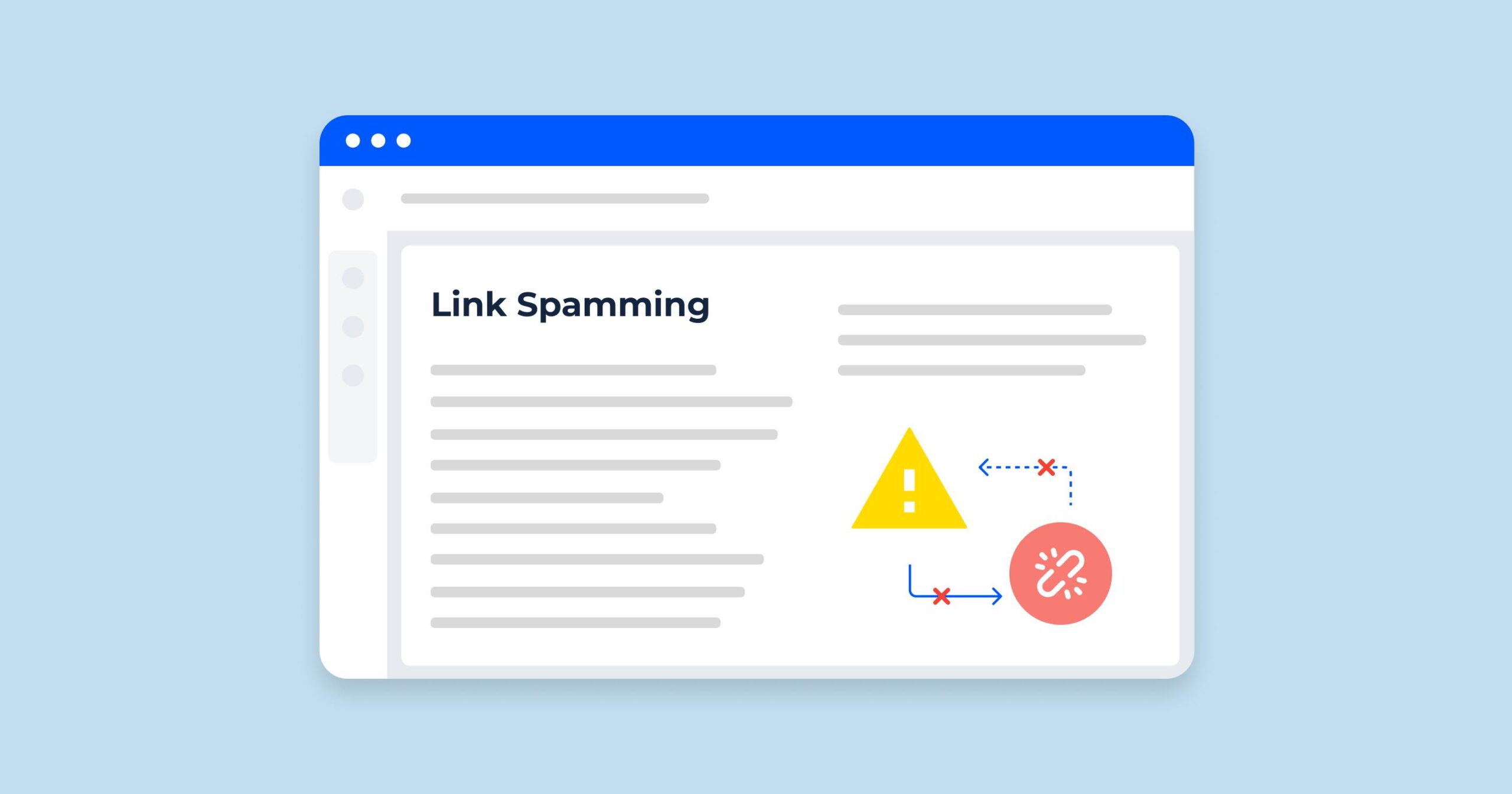
You cannot fix a problem you do not know you have. It is important to check your backlink profile for spammy links, especially since competitors can use negative SEO tactics against you. Here is how you can find toxic backlinks that might be hurting your site.
Conducting A Backlink Audit With SEO Tools
The most effective way to find spammy links is to perform a complete backlink audit. This is a key part of any good SEO audit. You can use various SEO services or tools, like the ones we provide at VH Info, to get a full list of every website that links to you.
These tools often provide a “spam score” or toxicity rating for each link. A high spam score indicates that a link is likely coming from a low-quality source, such as a known link farm or a site with malicious content.
Analyzing Anchor Text Distribution
Anchor text is the part of a link that you can click. When links are normal, the anchor text should change often. Some links may use your brand name. Others might use your website address or short words to say what the page is about.
If you check your links and see that most use the same words over and over, this is not good. It means many of your links have the same keyword-rich anchor text. This shows a big warning for spammy links. It tells you that someone tried to trick search results for that word.
Google will think this does not look real or natural.
Checking For Irrelevant Linking Domains
Quality backlinks come from websites that are related to your industry or topic.
If you run a bakery website, a link from a food blogger is great. A link from a Russian casino site is not.
During your SEO audit, look at the domain name of each site linking to you.
If you see a large number of backlinks from irrelevant, foreign, or nonsensical domains, these are likely spam links. These links provide no value and can hurt your site’s credibility in the eyes of a search engine.
Using Google Search Console Alerts
Google Search Console is a free tool from Google that every site owner should use. It provides valuable information about how your site performs in Google search. Importantly, Google will use this platform to notify you if it detects a problem.
If your site has been given a manual action for unnatural links, you will receive a notification here. Regularly checking Google Search Console is a simple way to stay on top of any potential issues with your backlink profile before they cause major damage.
Best Practices For Dealing With Spammy Links
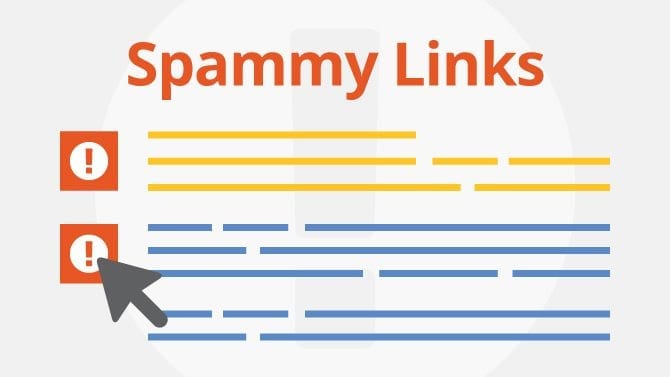
Once you have identified toxic backlinks pointing to your site, you need to take action to clean up your link profile. This process shows Google that you are committed to following Google’s guidelines and can help you recover from penalties or avoid them in the first place.
Manually Requesting Link Removal
The first step you should always try is to contact the site owner of the website with the spammy link.
Find their contact information and send a polite email asking them to remove the link to your site. Keep a record of your requests. While many website owners of low-quality sites will not respond, it is important to show Google you made an effort.
This is often difficult when dealing with automated link farms or professional link spammers.
Creating and Submitting A Disavow File
If you cannot get a spam link removed manually, your next step is to use Google’s disavow tool. This tool is available in Google Search Console. You can create a simple text file listing all the domains or specific URLs of the toxic backlinks you want Google to ignore.
When you submit this disavow file, you are essentially telling Google, “I don’t endorse these links, so please don’t count them against my site.” This is a powerful tool but should be used with care, as disavowing the wrong links could harm your SEO.
Reporting Spammy Websites to Google
If you find websites made just to create spam links, you can tell Google about them. These sites may be private blog networks or pages full of comment spam. Reporting these sites helps Google make search results better for all users.
It is useful if you think someone is trying to hurt your site with bad SEO tricks.
While this does not solve problems on your own site right away, it helps the internet stay clean and safe for everyone. It also helps remove the spam links from search pages and stops those causing trouble.
Monitoring Your Backlink Profile Regularly
Dealing with spammy links is not a one-time task. New links are created every day, and you could be targeted by negative SEO attacks at any time. It is vital to monitor your backlink profile on a regular basis.
Set up alerts or schedule a monthly SEO audit to check for new, toxic backlinks. By catching them early, you can request removal or add them to your disavow file before they cause any harm to your search rankings and organic traffic.
Ethical Alternatives to Link Spamming

The best SEO strategy is always a long-term one focused on providing real value. Instead of trying to cheat the system with link spamming, focus your efforts on earning quality backlinks that will stand the test of time. Here are some effective and ethical ways to build links.
Creating High-Quality, Linkable Content
The most powerful way to get quality links is to create content that people naturally want to share and link to. This could be in-depth guides, original research, helpful tools, or entertaining videos.
When you produce high-quality content that offers real value, other website owners and bloggers will link to it as a resource for their own audiences. These earned links are the most valuable type of backlink you can get and are the foundation of a strong link profile.
Guest Posting On Authoritative Websites
Guest posting involves writing an article for another website in your industry.
When you write guest posts for reputable, high-quality sites, you can often include a link back to your own website in the author bio.
This is a great way to get your name in front of a new audience and earn a valuable quality backlink at the same time. This is very different from spammy guest posting on low-quality sites that accept any content. Focus on building relationships with authoritative sites.
Natural Outreach and Digital PR
If you have created great content, do not just wait for people to find it. Reach out to bloggers, journalists, and other website owners who might be interested in it. This is not spam posting; it is professional communication.
You can also use digital PR tactics, such as sending out press releases with newsworthy information or sharing your content on social media to increase its visibility. When you promote great work, you increase the chances of it getting noticed and linked to.
Broken Link Building Strategies
This is a clever and helpful link-building technique. It involves finding broken external links on other websites.
A broken link is a link that leads to a page that no longer exists. You can then contact the site owner, let them know about the broken link, and suggest your own relevant, high-quality content as a replacement.
This is a win-win: you help the site owner fix their website, and you get a relevant quality link in return.
FAQ’s:
What Is Considered A Spammy Link?
A spammy link is any link that is created with the sole purpose of manipulating search rankings. It offers no real value to the reader and typically exists as part of a link scheme. These spam links often come from low-quality, irrelevant websites, link farms, or are placed in places like comment sections or forums where they do not belong. They are a classic sign of black hat SEO.
Can You Recover From A Penalty Caused By Spamming Links?
Yes, you can bounce back from a penalty because of spam links. This includes a manual action from Google. It takes hard work and time.
First, do an SEO check to find all bad links. Next, try to get these bad links taken down. If you cannot remove some links, use the disavow tool in Google Search Console. This tool tells Google not to count those links. The most important thing is to stop all tricks meant to fool search engines. You need to prove that you will follow Google’s rules for building links from now on.
Are All Paid Links Considered Spam?
No, not all paid links are considered link spam. If a paid link is for advertising and is properly marked with a rel=”nofollow” or rel=”sponsored” tag, it does not violate Google’s guidelines.
This tag tells Google not to pass any link juice or ranking credit. However, if you pay for a link specifically to get link juice and improve your search rankings, and it is not marked with one of these tags, it is considered a link scheme and a form of link spam.
How Does Negative SEO Involve Link Spam?
Negative SEO is when a competitor tries to harm your website’s rankings.
One of the most common forms of negative SEO attacks is to point thousands of low-quality, spammy links at your domain. They do this hoping that search engine algorithms, like the Google Penguin update, will flag your site for manipulative tactics and issue a penalty.
This is why it is so important to regularly monitor your backlink profile for suspicious activity and toxic backlinks.
Conclusion
The bottom line is that spamming links is a dangerous and outdated black hat SEO tactic that will hurt your website in the long run.
The risks of penalties, reputation damage, and lost organic traffic are far too high. Instead of looking for shortcuts, a successful SEO strategy must focus on earning high-quality, relevant backlinks.
Producing high-quality content alongside earning backlinks through ethical practices lays a robust, sustainable groundwork for your website, while maintaining a clean link profile full of authoritative backlinks is essential for both acquiring and preserving strong search visibility.
At VH Info, we believe in this long-term approach to help you grow your presence in the search engine results safely and effectively.
